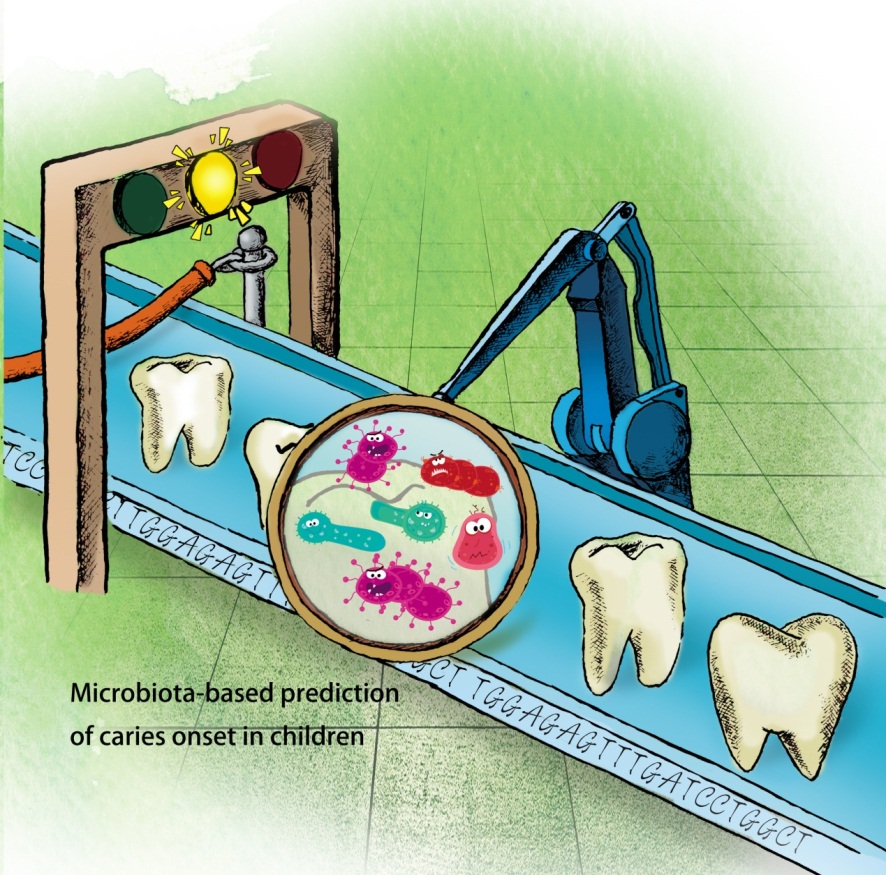Microbiota are present everywhere in the biosphere. Can we employ them as indigenous “biosensors”, to diagnose and predict the health of their ecosystems? A joint research team from the Single-Cell Center, Qingdao Institute of Bioenergy and Bioprocess Technology (QIBEBT), Chinese Academy of Sciences and Guanghua School and Hospital of Stomatology, Sun Yat-sen University (SYSU) has developed a microbiota-based approach for predicting early childhood caries (Teng, Yang, Huang, et al, Cell Host Microbe, 2015).

Graduate student Teng Fei and her colleagues simultaneously tracked microbiota development at plaque and saliva in 50 four-year-old preschoolers for two years, who either stayed healthy, transitioned into cariogenesis or experienced caries exacerbation. They found that caries onset delayed microbiota development which otherwise are correlated with aging in healthy children. By distinguishing between aging- and disease-associated taxa and exploiting the distinct microbiota dynamics between onset and progression, they proposed a novel Microbial Indicators of Caries (MiC), which can predict future ECC onsets for samples clinically perceived as healthy with 81% accuracy.
Comparing with traditional caries risk assessment methods such as oral bacteria count, chemical characteristics of saliva, baseline caries status, as well as personal questionnaires (e.g. oral hygiene), MiC is objective and independent upon the human examiner’s visual observation, individual judgment and microbial culture, leading to satisfactory reproducibility and comparability among examiners.
Furthermore, the study revealed that, in healthy children, oral microbial composition is age-dependent, that is “Oral Microbiota Ages” of healthy children were consistent with their corresponding chronological ages. However, in caries onset and progression children, their “Oral Microbiota Ages” were derailed from their corresponding chronological ages. Thus“Oral Microbiota Age” can serve as a population-wide, early alarm system for predicting ECC risks.
Human health and nutrition are closely linked to theirmicrobial symbionts, collectively called the Second Human Genome. Diagnosis and prediction of chronic diseases based on human microbiota has been drawing significant attentions, yet only a few cases have been published so far. Therefore, the findings in this study may be of reference value to those studying the microbiota inhabiting other body sites of human and the microbiota in the ocean, soil and air.
The research was led by Professor XU Jian, Director of the Single-Cell Center, CAS-QIBEBT and Professor LING Junqi, Guanghua School and Hospital of Stomatology, Sun Yat-sen University. Professor Rob Knight’s team from University of California San Diego and researchers from Qingdao Municipal Hospital also participated in this study.